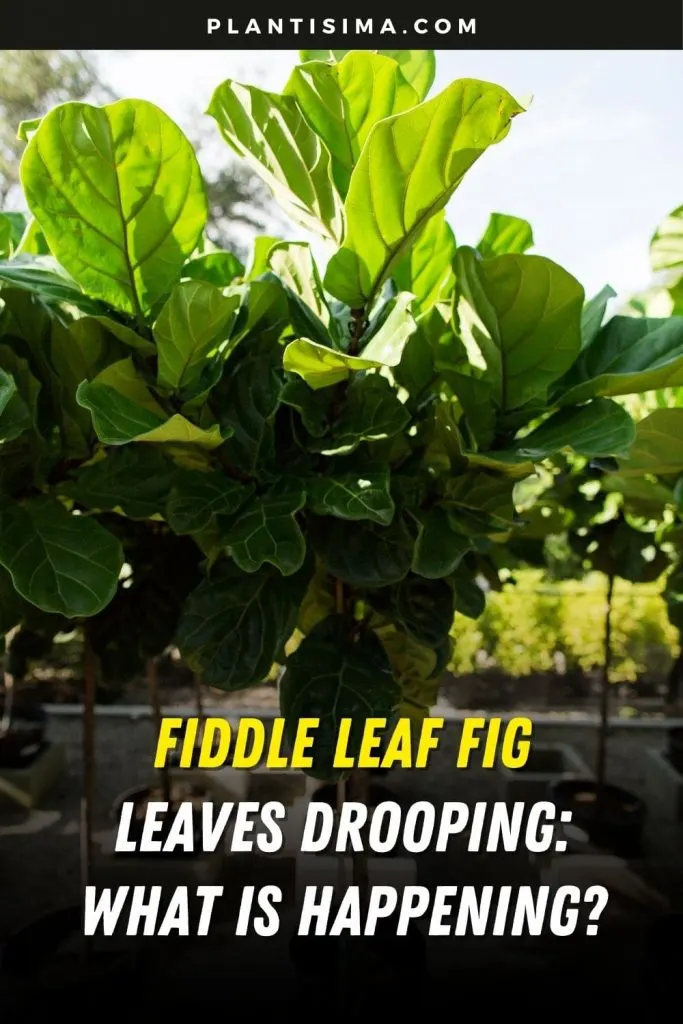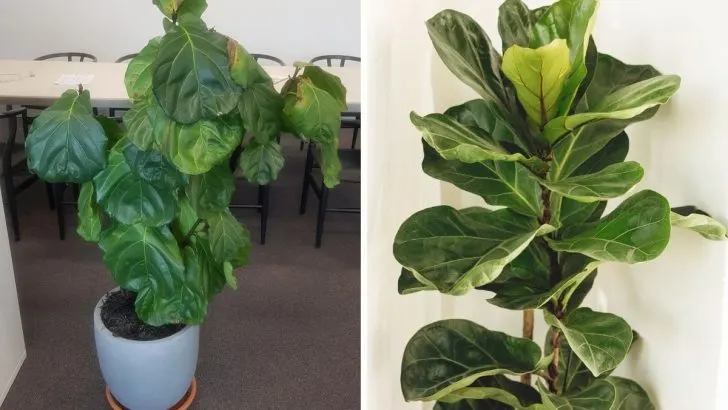Hello ladies! Today we’re going to discuss a pretty famous problem with fiddle leaf fig plants. I am talking about fiddle leaf fig leaves drooping.
Did you notice lately that your fiddle leaf fig leaves are drooping? Well, fiddle leaf fig leaves drooping is a problem that has some background issues behind it.
Sometimes, it is a simple problem like the pot size. Your plant needs a bigger pot because its root is not feeling comfortable in the existing one. But there are also some other reasons.
There are other signs like excess water, foliar growth, adequate drainage issues, how you do your watering session, did you adjust well your drainage hole, and chemical burns… Trust me, there is even more!
To save you from a few hours of wondering what is the problem with your plant, below, we bring you all about fiddle leaf fig leaves drooping issues!
Fiddle Leaf Figs Features
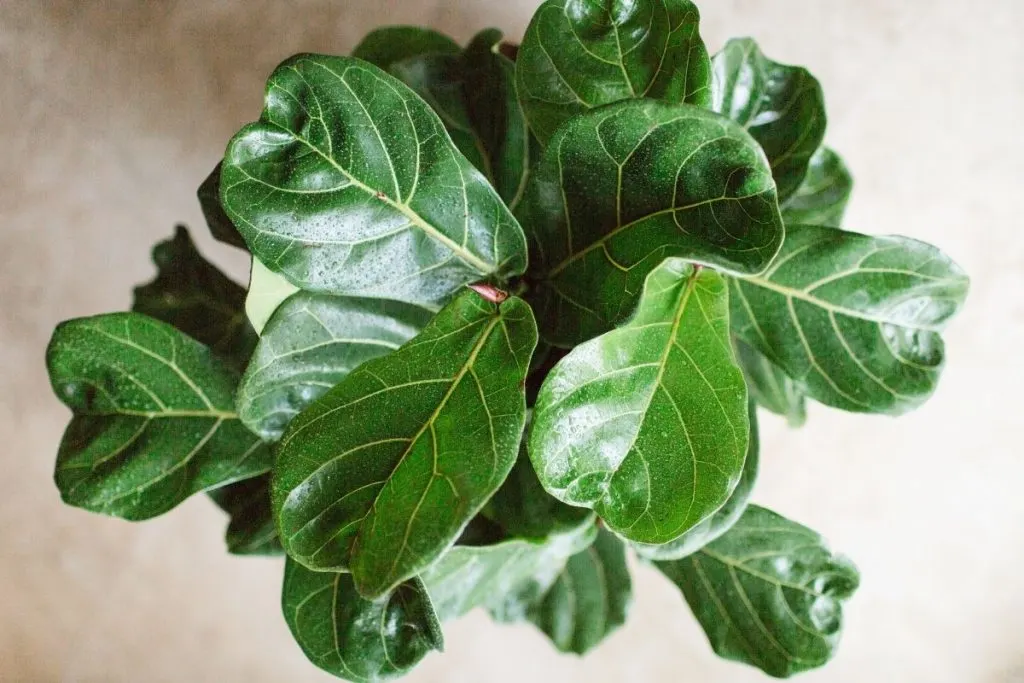
Ficus lyrata is one of the ficus plant types. It is worth knowing that the genus of ficus lyrata itself – Ficus, or ficus, includes about 1,200 species of plants and even more varieties.
Plants of this genus are usually found in the Old World, more precisely in the tropical parts of Asia, West Africa, Australia, and Oceania. Sometimes we can also encounter species that occur in areas of the Mediterranean basin.
It is an interesting fact that lyophilic ficus begins their life on other plants, e.g., on banana trees also know as travelers palm, but they are not parasitic plants.
However, over time the plants grow downwards and take root in the ground, leaving a banana tree for example.
It is worth knowing that lyophilic ficus is found in West Africa. It is characteristic of them that their leaf veins are in the shape of a lyre.
These wonderful leaves should be clean on monthly basis with a damp cloth only.
Maintenance And Care For Fiddle Leaf Fig Plant
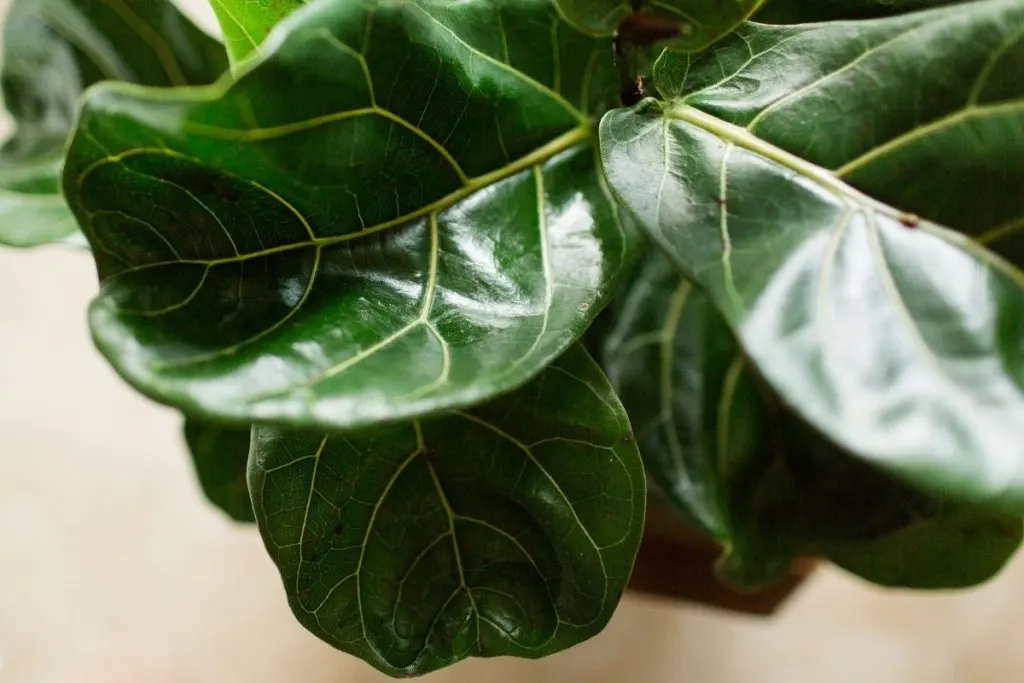
Loss of leaves is inevitable because it is part of the natural aging process of plants. However, proper care of Fiddle Leaf Fid figs can further reduce the loss of healthy leaves.
Starting with the right soil potting mix should drain quickly, but to keep these rainforest plants happy, you need to keep enough moisture.
Learn how to wet the soil with your fingers without determining the number of days in the cycle. Fiddle figs should be watered only after the first 2 inches of soil has dried completely.
You’ll learn all about other reasons why your fiddle leaf fig leaves drooping and how to solve that issue! Stay with us and get some coffee!
Watering Schedule For Fiddle Leaf Fig Plants
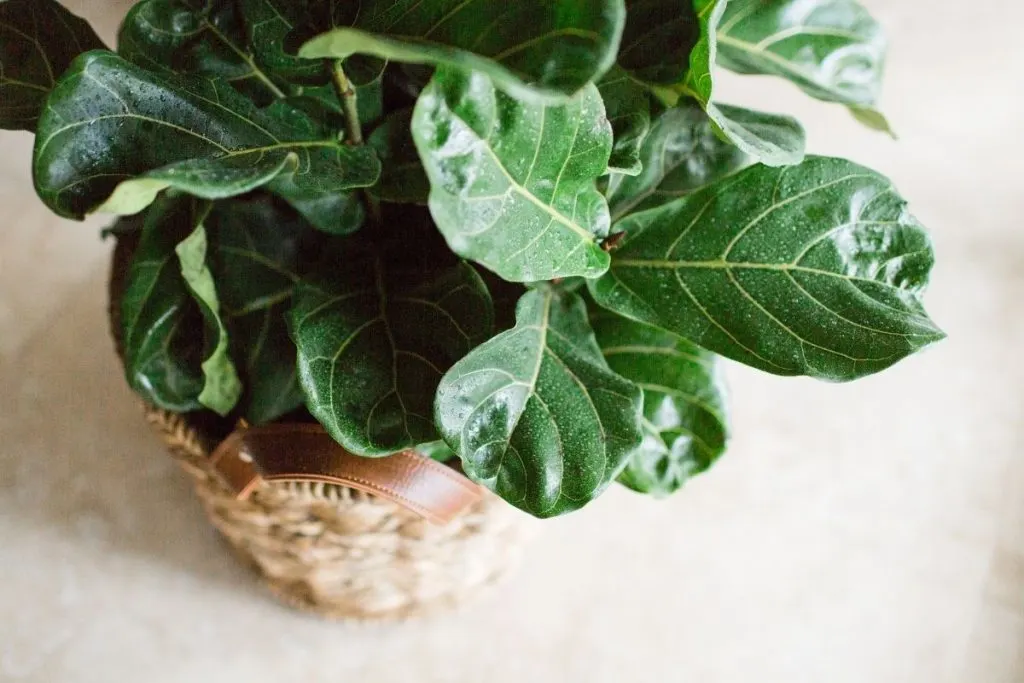
When watering the plant, make sure that the plant’s roots are moist. Some plants with very dense roots can skip irrigation because the water flows around the mass of the roots and from the pots.
But it is a tricky little game. You don’t want to overdo it and get root burn or root shock in return. Too much moisture can kill ficus lyrata leaves and plants in general.
Your plant seems to be watered well, but its roots are dying of thirst. Slowly pour water into the bottom of the trunk so that the water is absorbed into the veins.
Fiddle Leaf Fig Drooping From Shock
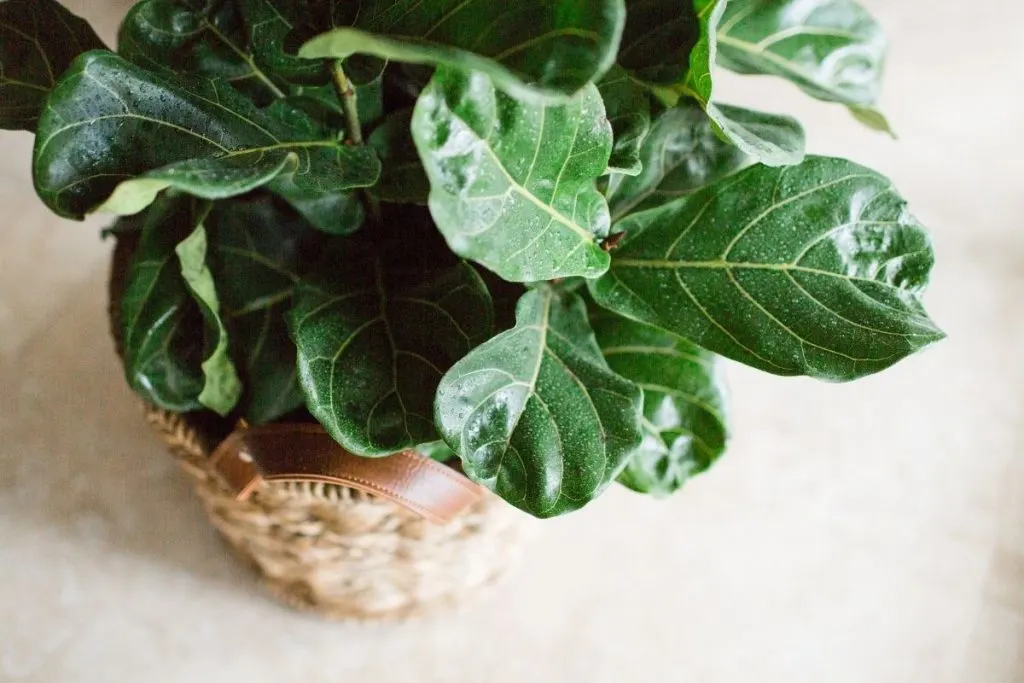
When the new leaves take over the fig tree, the plant is subjected to significant stress during transplanting and when placed in a new environment. Fiddle leaf figs do not like change and grow well in a stable environment.
Growing in a bright greenhouse with a lot of other plants around it and the humidity is relatively high, so the new lighting and humidity can be much lower than the plants are accustomed to.
Leaves droop on tropical plants due to insufficient sunlight as well. Pay attention to lighting conditions! In addition to the bodily injury caused by beatings during the journey, ficus lyrata leaves can respond to shock by lowering old leaves in the middle and bottom of the plant.
Drooping Leaves Due To Dry Air
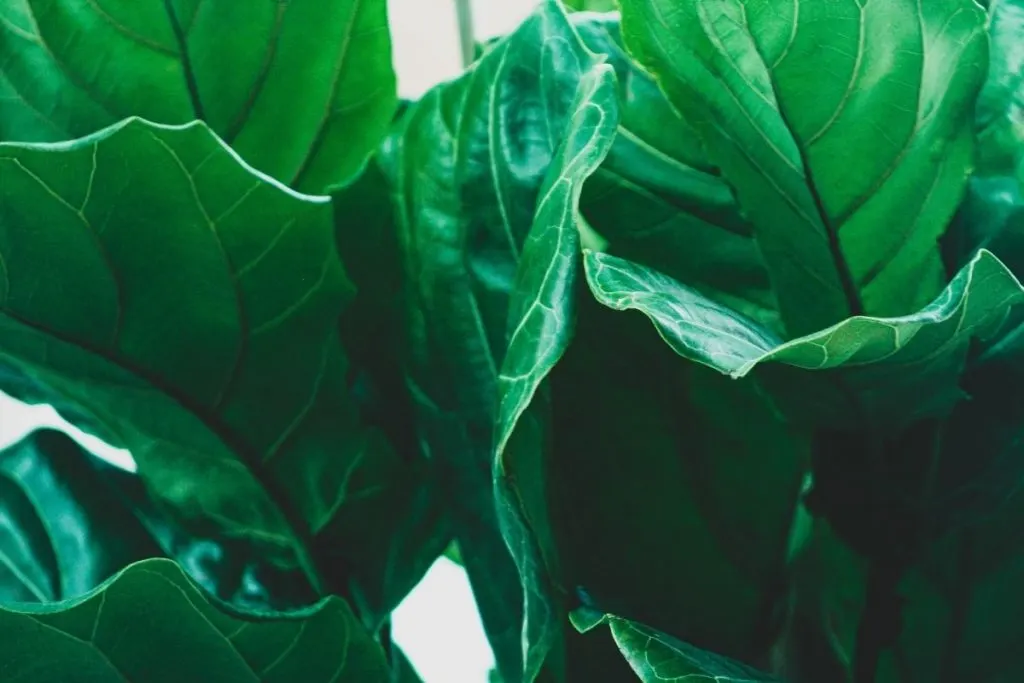
The second leading cause of leaf loss in deciduous figs is dehydration. Lack of water and very dry air can make fiddle fig leaves fall.
Most people maintain a humidity level of about 40% in their home, but this houseplant prefers humidity over 60%.
If possible, place the plant next to a humidifier or at least in a humid place such as a bathtub.
In any case, keep figs in fiddle leaves away from heating and humidifying cavities. The leaves that have fallen due to lack of water are first dried at the tips of the leaves.
Leaf fig leaves do not like fig designs, so it is better to choose them away from vents or hot air blowers.
Bacterial Infection Cause Of Leaves Droop
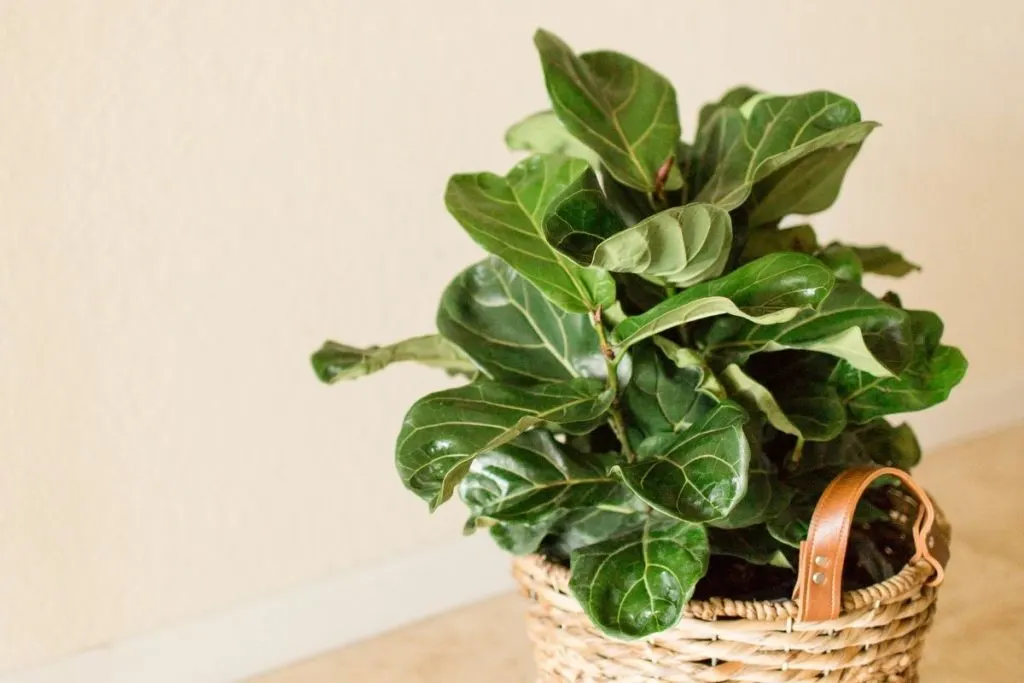
The yellowing of the leaves is a clear sign that figs with fiddle leaves have bacterial spots on the leaves.
In the case of root rot, the leaves are usually dark green with bright yellow spots, but in the bacterial spots of the leaves, the brown spots spread and the leaves turn yellow.
The rot of the roots and the bacterial strains of the leaves causes the fiddle fig leaves to eventually fall off the fig leaves.
Bacterial leaf spots prefer new growth, so if new leaves are worse than old ones, bacterial leaf spots can be the cause.
How Can I Solve This Problem?
Unfortunately, this is the most difficult condition to treat in the image of a violin leaf. Even with proper care and watering, it may be too late for the plants.
If the damage is not severe, cut any leaves with brown spots and replace the plant with fresh, sterile soil. Sufficient light and water should be administered easily until recovery.
Fertilizer Issues That Cause Leaves Dropping
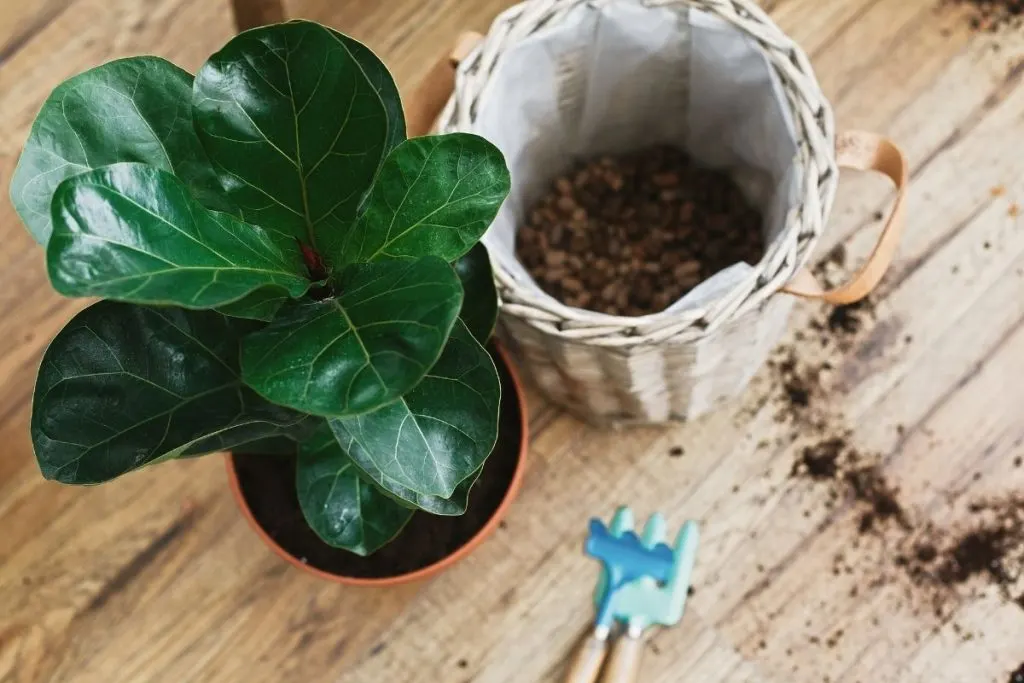
Fiddle figs do not require much fertilizer, but during the growing season, they should be fed at least once every few months. After a year or two without fertilizer, figs suddenly lose their leaves.
These fennel leaf fig leaves usually turn yellow at the inner root of the leaf, then shrink and fall off. Do not give the plant much fertilizer to solve the problem.
Start with half the power recommended by the fertilizer manufacturer. And after 2 months, complete treatment that can promote new growth without burning the roots.
Also, when choosing the right fertilizer, always go with the organic alternatives. They are much better for this plant than the liquid ones.
Drooping Fiddle Leaf Fig Due To Root Rot
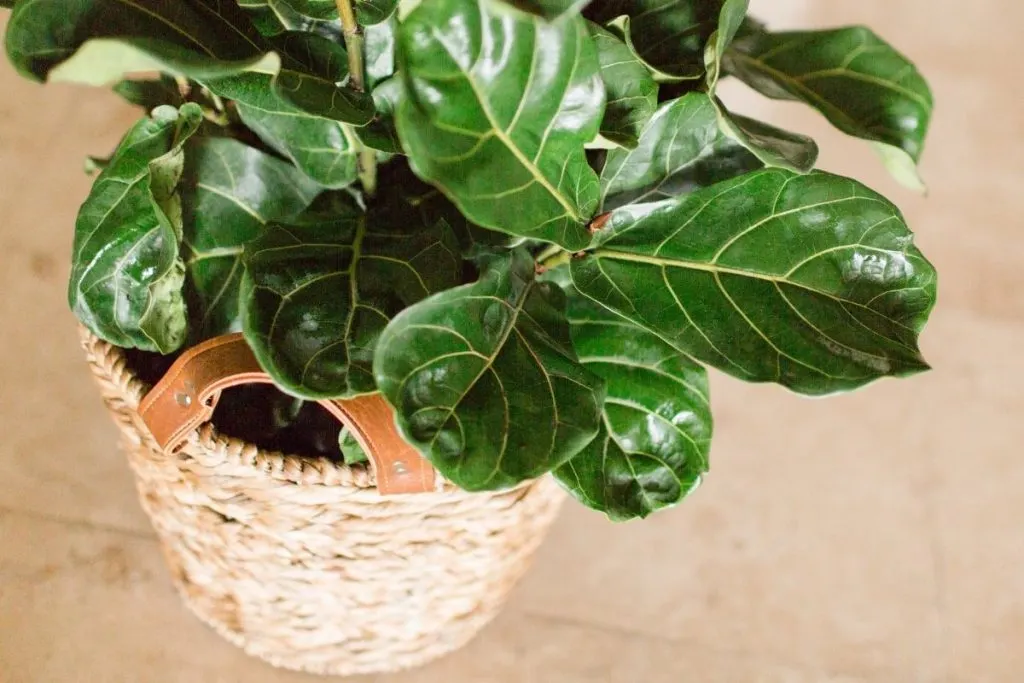
A common cause of drooping fiddle fig leaves is root rot, often a combination of too much water and too little light.
A sign of this condition is brown spots or black spots on the leaves. To save plant’s leaves preview drainage and lighting conditions as plants drop stains.
It is important to deal immediately with root rot and protect the plant from bacteria, fungi, and insects. It is important to react right away if you want your plant’s health to stay in order.
Leaves Drooping Because Of The Heat Stress
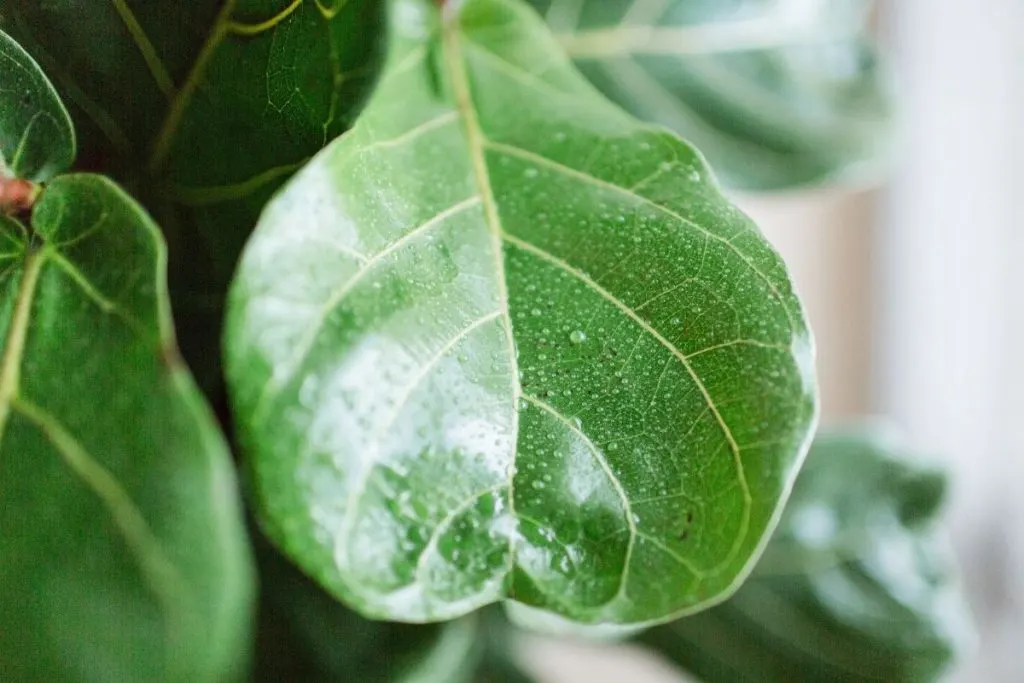
You will notice leaves drooping when you expose them to too much heat as well. Direct sunlight won’t only bring yellow leaves, but also heat stress.
In conditions of low humidity and high temperatures, this condition will occur. If you notice that your plant seems droopy, get a spray bottle, refresh it a bit, especially the upper leaves and make some drainage holes.
In places where the temperatures are high, it is more desired for your plants to be in plastic pots. They’re not restoring the temperature like other materials that pots are made of.
When heat stress appears, fiddle’s roots are endangered as well. Leaves lose their nutrients and you have a big problem then.
Enough light is perfectly normal, but don’t overdo it, the plant grows in partial shade and bright light as well.
To avoid further damage place your plant somewhere cooler. It should get enough sunlight still for its growth but avoid extreme temperatures (both cooler and higher).
For your plant to breathe after this shock, repot it into a larger pot.
How Light Affects Fiddle Leaf Fig Leaves Drooping

Fiddle fig leaves prefer brighter and more indirect light than too much direct sunlight. As winter approaches and the sunlight falls naturally, the plants may lose one or two leaves in response.
Using artificial light is the best way to keep your lighting level constant throughout the year. But remember, artificial light leads to chemical burn It is also an easy way to prevent sunburn by providing adequate lighting.
Pests And Diseases Of Fiddle Fig Leaf Plant
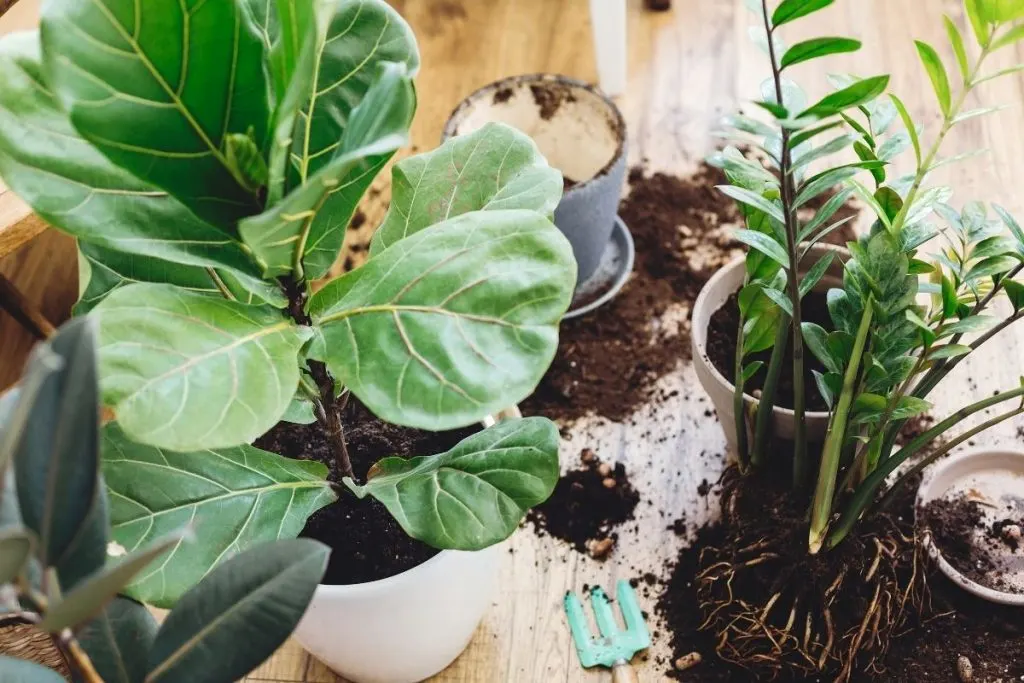
Pests affecting fig leaves with fig leaves are often too small to be detected, such as ticks and aphids. Take a good look at the bottom of the healthy leaves as well as the fallen leaves.
Sometimes, pests can hide in fiddle leaf fig’s soil, so if you don’t notice them on the leaves, check the soil.
Symptoms of the disease include black or constrained spots on the leaves, reticulated fungi on the soil surface, and withered stems.
How To Get Rid Of The Pests?
Pests are easy to treat. Use neem oil products for houseplants. Alternatively, you can use a home remedy by adding 1-2 teaspoons of baking soda and 1-2 teaspoons of mineral oil to a spray bottle.
Shake it well, then spray all infected parts of the plant. Keep infected plants away from other houseplants. The oil has an unpleasant odor, so keep the plant out if possible.
Carefully sprinkle all the leaves of the fiddle fig plant. Turn each leaf over and spray the bottom and remember where the leaf meets the stem.
Age Of Your Fiddle Leaf Fig Plant
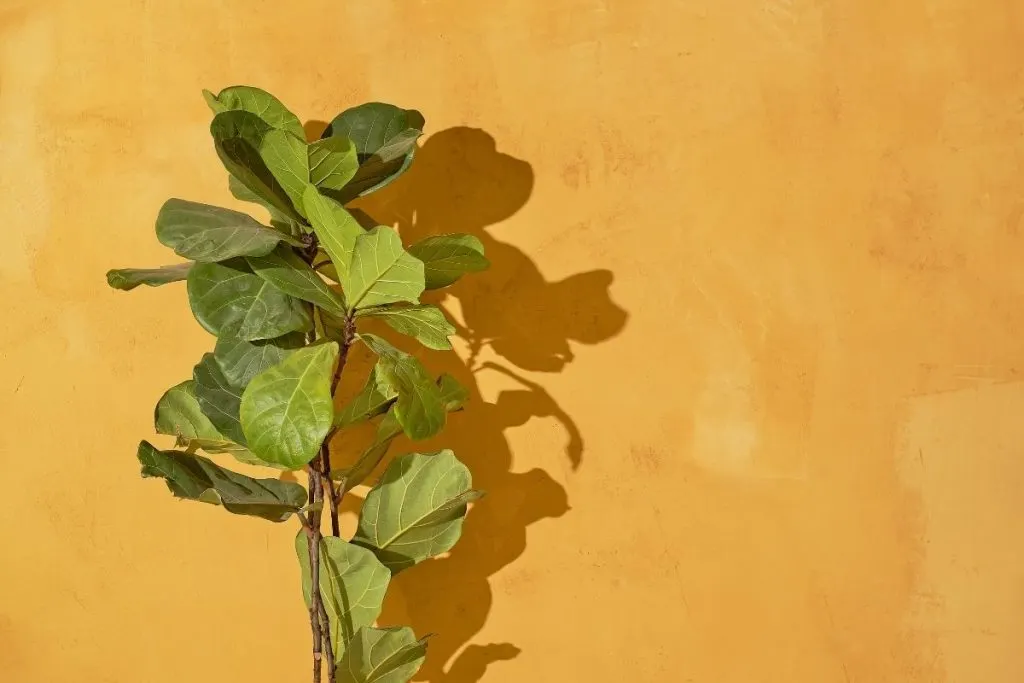
The old leaves at the bottom of the plant are finally too old to support the plant. They usually do not turn yellow and do not develop dry tips before the plant has two signs of another problem.
Whether the cause is old age or a problem, old leaves usually disappear first. However, if the process is natural, one or two leaves are lost at once.
Other causes can cause a plant to lose half of its plant at once and many leaves to fall suddenly.
Fiddle Leaf Fig Tree Droopy Leaves Solutions
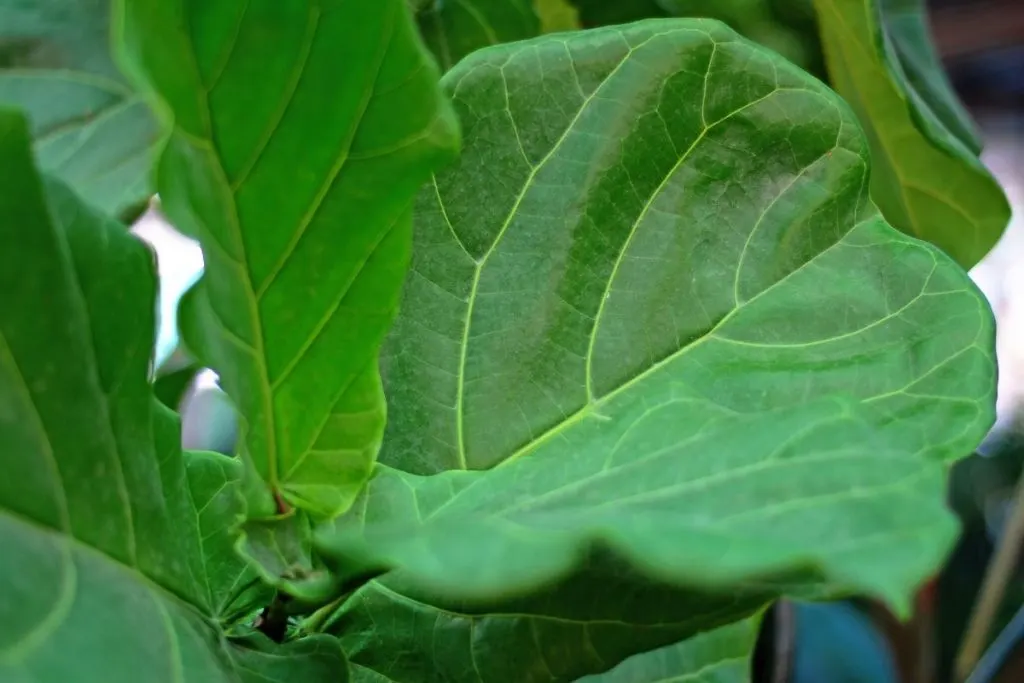
If you just bought this tropical plant, wait for the leaves to fall as you adjust to your new home. Three to seven plant leaves are very normal for a plant to recover from shock.
Maintain proper lighting, humidity, and watering habits to help the plants recover. Place the new plant in a bright place, away from direct sunlight and away from heating grids or cold panels.
Water once a week or when 1-2 inches of soil is dry. Give the plants a few weeks to settle in their new home.
How To Remove Damaged Leaves?
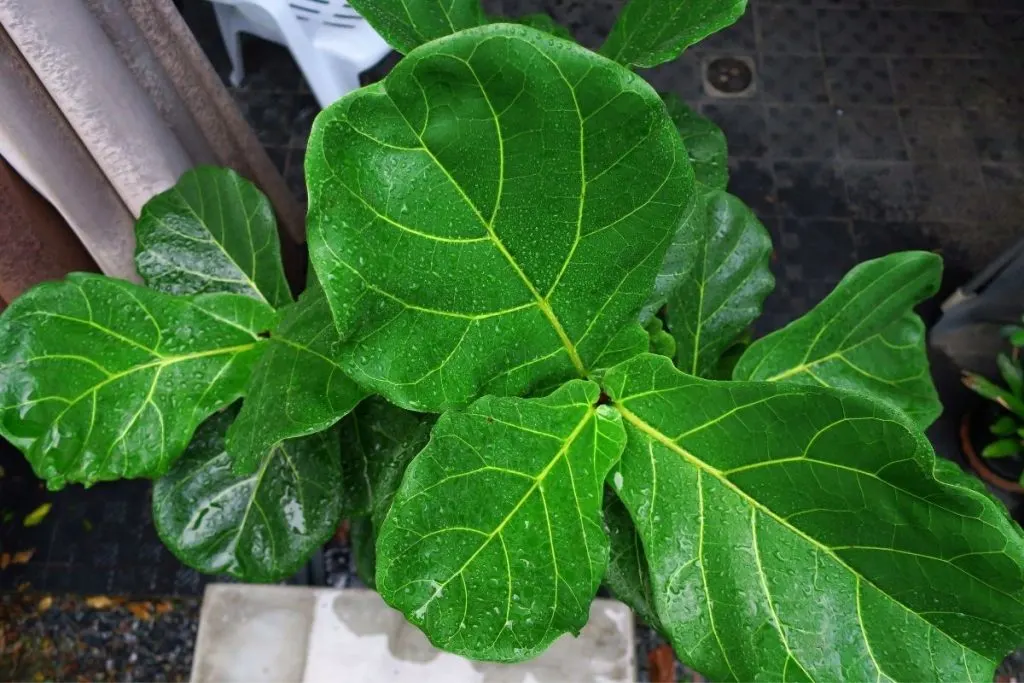
Cut the tips or stains from the brown leaves with clean scissors. To avoid damaging the healthy leaves left on the plant, just cut the damaged areas or spots and leave a small brown border.
When the whole leaf turns brown, remove the lower leaves one by one. Pull the blade slightly. It can go away on its own. If the leaves do not come off even if you pull lightly, cut the stems with clean scissors.
Wrapping It Up
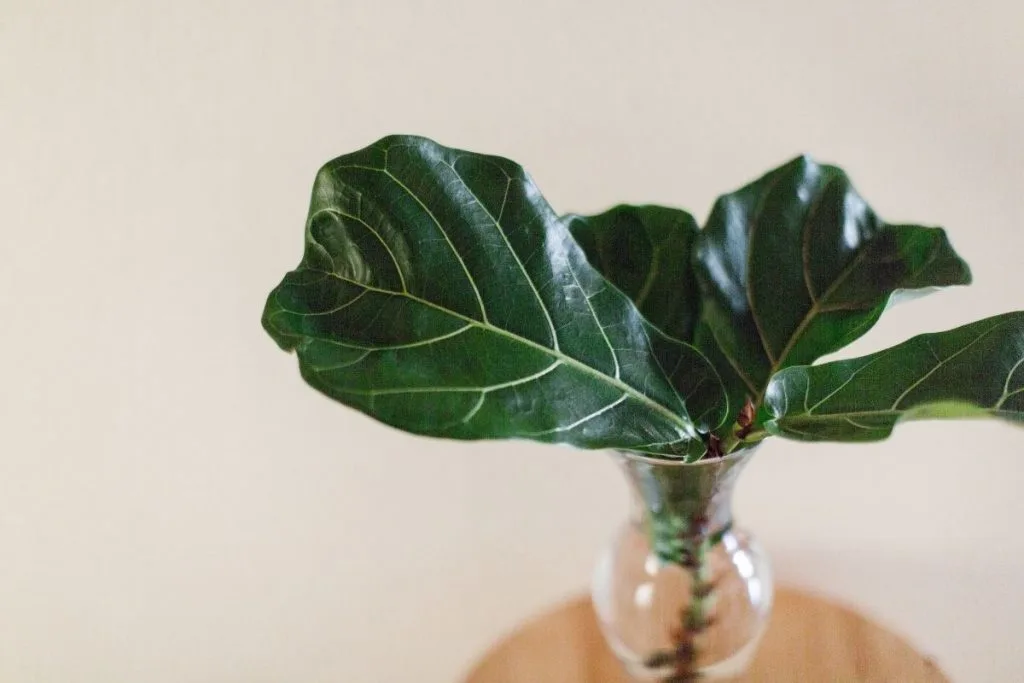
Good soaking routine, but not overdoing it, small stones (a few small stones) near the drainage holes, smart pebble tray use, lukewarm water as the best watering options, and everything else we learned above, and there you go!
You got yourself a perfect care guide for fiddle leaf fig leaves drooping plant. I’m sure you’ve learned how to do it now after you read this article.
Solving it isn’t hard at all, but noticing these problems when they start can be pretty tricky, so make sure you “control” your plant now and then. After you solve these issues correctly you can expect a new foliar growth within a month or two.
That would be all for today darlings, good luck!
